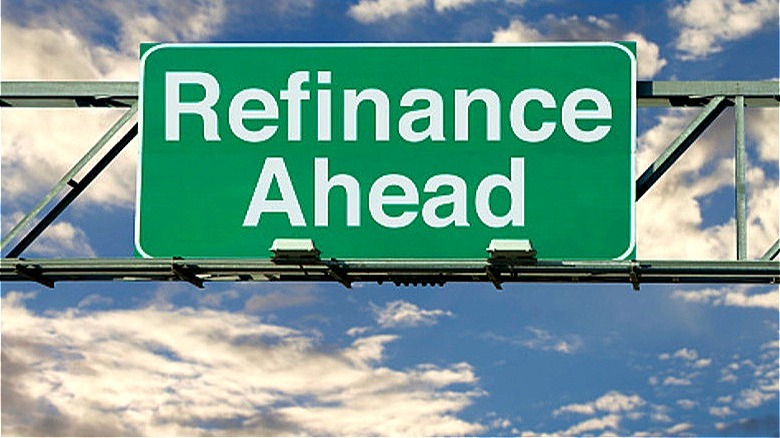Reasons To Think Twice About A 96-Month Car Loan
There's no question that new car buyers are in a tough spot right now. While the average price of a new car in 2024 has dropped slightly from its post-COVID-19 peak, the cost to buy a new car is still stubbornly expensive. What's more, further compounding the high cost of a brand new car are higher auto loan interest rates as a byproduct of the Federal Reserve's continued fight against inflation. The days of 0% auto loans are mostly in the rearview mirror now, replaced by an average new car loan interest rate of 7.25% for borrowers with great credit.
A popular way to stretch the budget of new car buyers is to opt for a longer term loan. By dividing the amount of money borrowed over a greater number of loan payments, the amount of each monthly payment is lower. Years ago, financial gurus advocated not exceeding 36 or 48 months for an auto loan term. Nowadays, it's hard for struggling families who need reliable transportation to make that advice fit their budgets. Enter a new trend of 84-month or even 96-month loans. Yes, that would be eight years until your new car is paid off.
Even though your new car dealer's financing department will be all too happy to offer you a 96-month loan (they'll make extra money for arranging the loan), you really should avoid doing so for a variety of reasons. To begin with, a 96-month loan will cost considerably more money in the end. As well, you could fall into a dangerous cycle of negative equity. Let's examine both of those pitfalls — plus a few others — a bit closer.
Throwing your money away on interest
Yes, your monthly payments will be lower with a 96-month car loan when compared to a shorter loan, but you'll wind up paying considerably more in total. One reason is because interest rates are typically higher on longer loans. For example, Navy Federal Credit Union, the nation's largest credit union, charges rates as low as 4.99% for a 60-month new vehicle loan for members with excellent credit. Those same conditions for a 96-month loan incur an interest rate of 8.09%. Plus, you'll be paying that higher interest rate for a much longer period of time.
Over the life of a $40,000 loan, that translates into a staggering $14,460.67 in interest alone for a 96-month term versus $5,279.97 in interest for 60 months. That's over $9,000 in extra interest paid over the life of the loan, which is literally throwing money away. Think of what else you could do with that $9,000, from building your emergency fund to investing it in your future retirement.
Getting upside down on your car loan
One of the major pitfalls of buying a new car — regardless of how you opt to pay for it — is the car's depreciation. Depreciation is when your car loses value due to age, mileage, and wear, both cosmetic and mechanical. The rate of depreciation varies between different makes and models of vehicles but according to credit ratings agency Experian, the average car depreciates 20% in its first year, then an additional 10% per year after that.
That means that as soon as you drive your shiny new car off the dealership's lot, it loses 20% of its value before you even arrive home. By the fifth year of ownership, the car's value will be reduced by half, on average. That's not a great position for anyone, but for buyers with a 96-month car loan, the odds of having negative equity skyrocket.
Sometimes referred to as being upside down, negative equity is when you owe more on a vehicle than it's worth. Since borrowers with very long auto loans are paying the vehicle off very slowly, the odds are that the vehicle will depreciate faster than the principal is being reduced.
Falling into a viscous negative-equity cycle
The consequences of negative equity in a vehicle, which as said becomes more likely the longer the financing terms are (as in the case of a 96-month loan), become apparent if you need to sell or trade in the car. For example, if you still owe $35,000 on a car worth only $25,000 on trade-in, you'll need to cover that difference. A car dealership might suggest adding the $10,000 shortfall to the balance of your next new car loan. That creates a vicious cycle of negative equity that you don't want to be in.
Finally, negative equity can also be an issue if your vehicle is stolen and it isn't recovered, or it's involved in a total loss accident. In that case, you'd still be personally responsible for the remaining loan balance even though your insurance company will only pay the market value of the vehicle, which could be less than you owe. For that reason, it's a good idea for borrowers with lengthy car loans to purchase gap insurance, short for "guaranteed asset protection," to cover that potential shortfall.
If you have a 96-month loan, consider refinancing it to a new loan with a shorter term if that's financially possible. Alternatively, try to pay off the pricey loan ahead of schedule. Apply extra funds toward the balance when feasible, like an income tax refund or an inheritance. Going forward, we recommend shopping for a new car within a budget that doesn't require 96 months to meet your monthly payment requirements. Or better still, buy a lightly used preowned vehicle.



